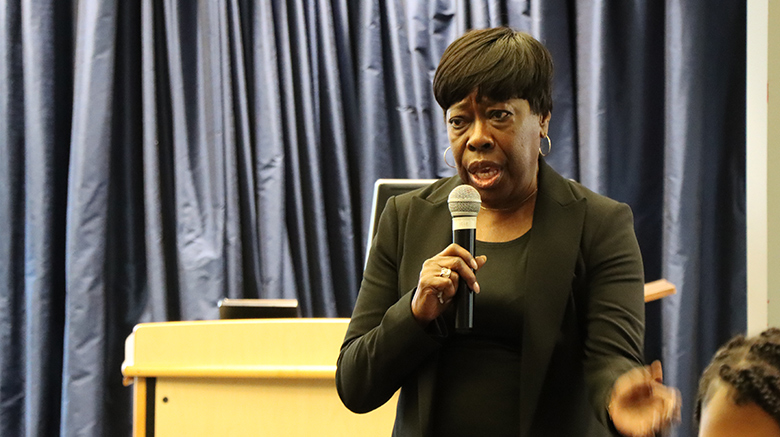Bettie Mae Fikes, a celebrated icon of the 1960s civil rights movement and the self-styled “Queen of the Blues,” spoke to — and sang with — students, faculty and staff in SJC Long Island’s McGann Conference Center Feb. 6 in recognition of Black History Month.
“I learned my first lesson for the civil rights movement in the basement of the First Baptist Church in Selma, Alabama,” Fikes said. “There, they would teach us how to protect ourselves from police brutality. I kept thinking, ‘Why would they teach us things like this? No one’s going to hit me.’
“I’m glad they did teach us that,” she added. “I didn’t realize its importance then.’
Her History
Fikes became a student leader for the Student Nonviolent Coordinating Committee (SNCC) during the movement. She began singing with the SNCC Freedom Singers — a group with which she still performs — and raising awareness while challenging segregation more than five decades ago.
Fikes participated in protests and sit-ins, and she was arrested and jailed while fighting for the right to vote.
“It used to be embarrassing to say you’ve been to jail,” she said. “They put me in jail. They kept me in jail. But I learned something in there — you cannot have a movement without music.”
The Power of Music
Today, Fikes still uses song to teach about the history of the civil rights movement.
“The reason why the movement was so powerful was because we had music,” she said. “And the main thing we had was spirituality — love, unity. When people cannot relate in words, they can relate in music.”
Fikes demonstrated firsthand the power of music when she had the students sing along with her to the song “This Little Light of Mine,” which was adapted in the 1960s by activists connected to the civil rights movement.
“What I’m trying to get you ready for is your time,” Fikes said. “Your time is coming. Are you watching the news? Are you looking around you every day at what’s going on? We’ve got movements all over the country, but everyone’s fighting for a different cause. We all need to be united under one umbrella, and that’s what music does.”

